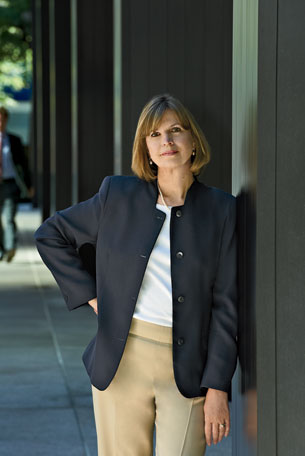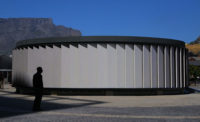Western architects are beginning to design all over the swiftly urbanizing continent.
We all know that American architects are finding work in China, Korea, and Qatar—but Angola, Botswana, and Burundi? Africa is booming: The continent is home to seven of the 10 fastest-growing economies in the world, according to the International Monetary Fund. It is also urbanizing at astonishing speed, with rapidly rising education rates and a burgeoning middle class. Yes, in parts of Africa there are tragic clashes of violence, desperate refugees, and entrenched poverty—and growing development may only widen the socioeconomic chasms. But news reports rarely paint the complex portrait of a continent of rich resources, increasing political stability in many countries, vast and varied topographies and cultures, and a relatively youthful population of more than a billion, where one of every two people has a cell phone.

This economic growth has enormous potential for construction and architecture. As we highlighted in our recent issue on Building for Social Change, Western and African architects have long been actively, if quietly, engaged in humanitarian projects on the continent, and we are featuring some similarly significant work this month. But in addition, in the last year or so, we began to hear of more and more Western architects doing ambitious work for other kinds of clients—governments, institutions, developers—such as Perkins+Will's Chicago office, which recently completed a university campus in Angola. In a conversation we had a few months back with David Adjaye, the Tanzanian-born, British-educated architect who has offices in London, New York, and Berlin, we learned more about Africa's future growth and the role that architects could play in the sensible and sensitive development of its cities (see our interview with Adjaye).
The Aga Khan Development Network (AKDN), which has done so much to promote good architecture in the developing world through the architectural prizes it awards every three years, is now commissioning projects as well, such as plans for a new university in Tanzania, designed by the award-winning New York firm Weiss/Manfredi and the Mexican architects Legorreta + Legorreta. (The AKDN is also establishing links with some of the best young African architects through the newly formed ArchiAfrika Educational Network.) Many institutions and some private developers are also actively seeking the best proposals for projects such as eco-resorts, technology centers, housing, parks, and new town plans.
In postcolonial Africa, nascent governments spurred the design of new cities and buildings—indeed, some of the continent's most grandiose projects of recent decades helped promote the greater glory of autocratic leaders. The founding president of independent CÔte d'Ivoire, Félix Houphouët-Boigny, ruler for 33 years until his death in 1993, built the largest church in the world, based on Saint Peter's in Rome, only bigger. In this issue, we feature the Sipopo Congress Center in Equatorial Guinea —a stunning project architecturally, which serves as a meeting place for the heads of Africa's 54 nations—though we need to note that its home country has a long rap sheet of human-rights abuses. Equatorial Guinea's strongman president Teodoro Obiang Nguema Mbasogo commissioned the Istanbul firm Tabanlıoğlu Architects to design the complex, after he saw its shimmering Tripoli Convention Center, completed three years ago, in Libya (we can't help but wonder if Muammar Gaddafi provided the reference). The architects say they focused more on the mission of these projects—to promote the African Union—than on the clients.
We were struck by the way the Congress Center addresses its context—how the architects artfully employed an elegant metal screen system against the brutal equatorial sun. That's the defining principle of the best design in Africa today. In 1900, 90 percent of the continent was under the yoke of European colonization, and many cities adopted European styles, from Beaux-Arts to Modernism. But what characterizes the architecture in the pages ahead is that a contemporary design sensibility is clearly inspired by local conditions: the climate, and often the materials and vernacular construction techniques.
It may seem a little myopic to look at the countries of Africa—with their disparate politics, problems, and potential—and think about architecture. But we agree with Adjaye's argument about the “architecture of governance” and how good design helps express a government's relationship with its citizens. Architecture at its best could support and enrich the cultures and aspirations of the people of this sweeping, vibrant continent.





Post a comment to this article
Report Abusive Comment